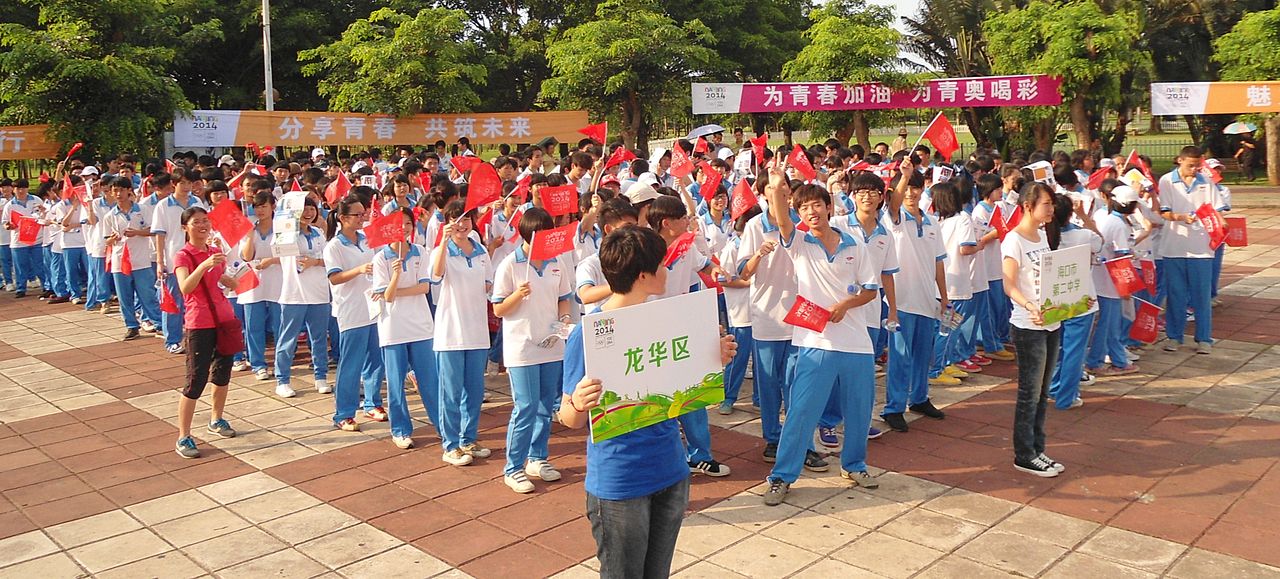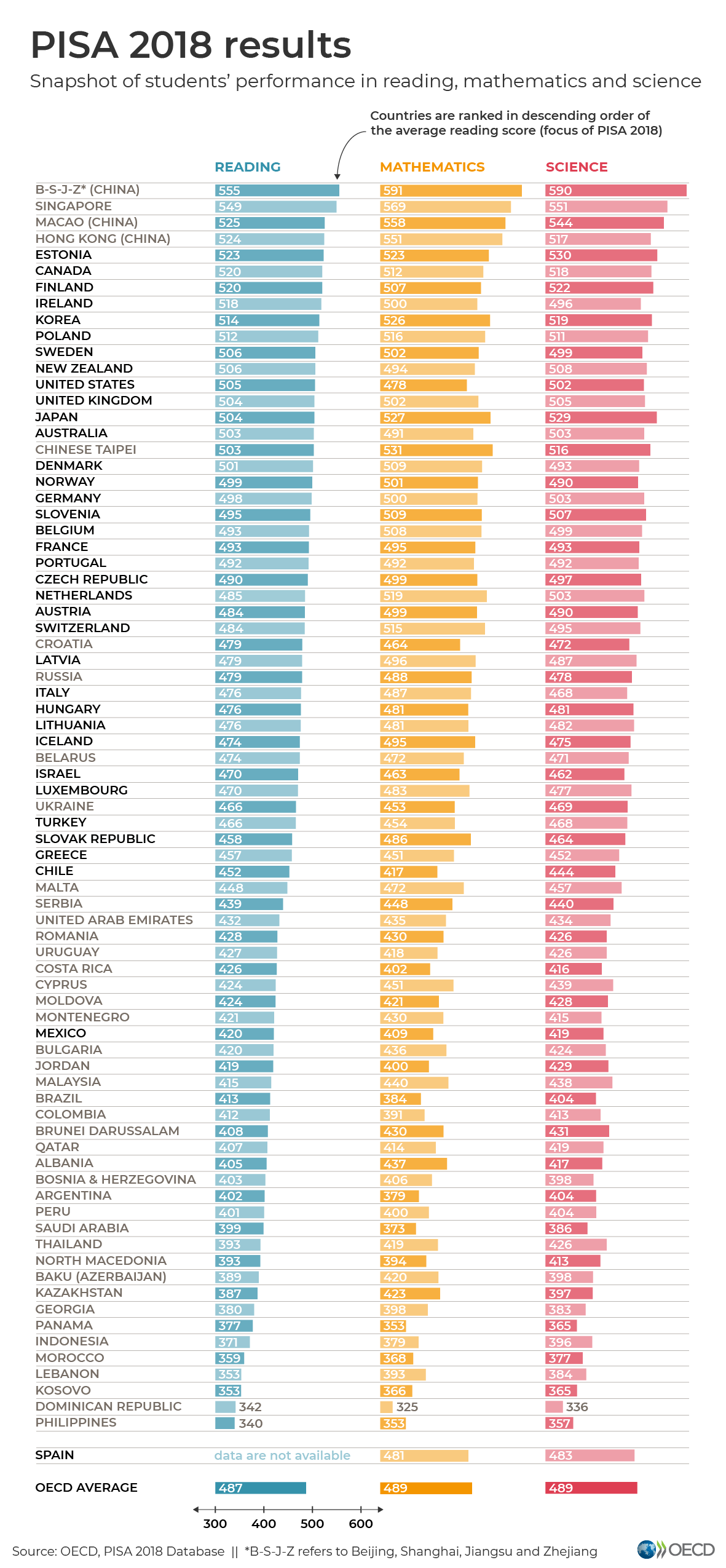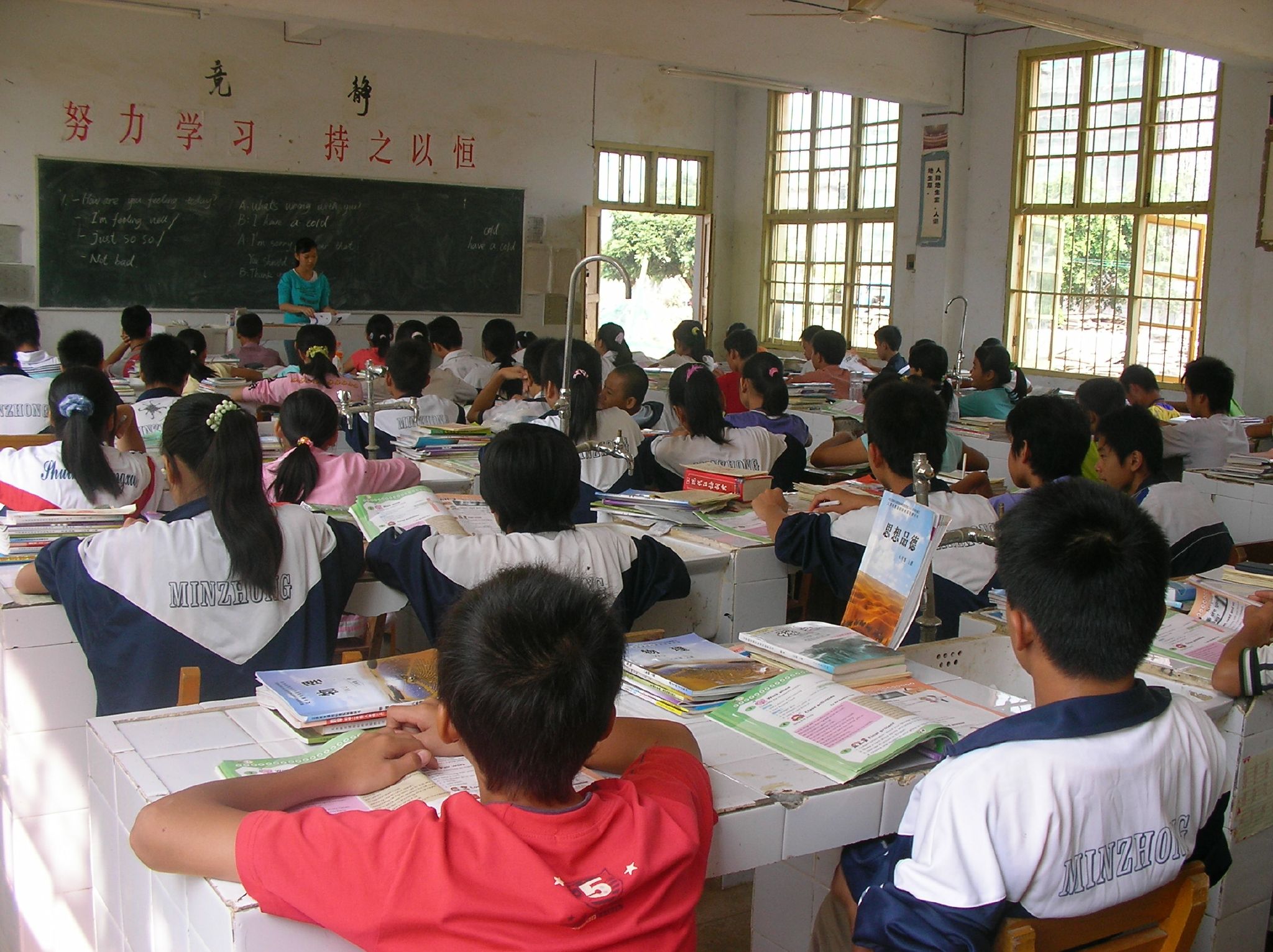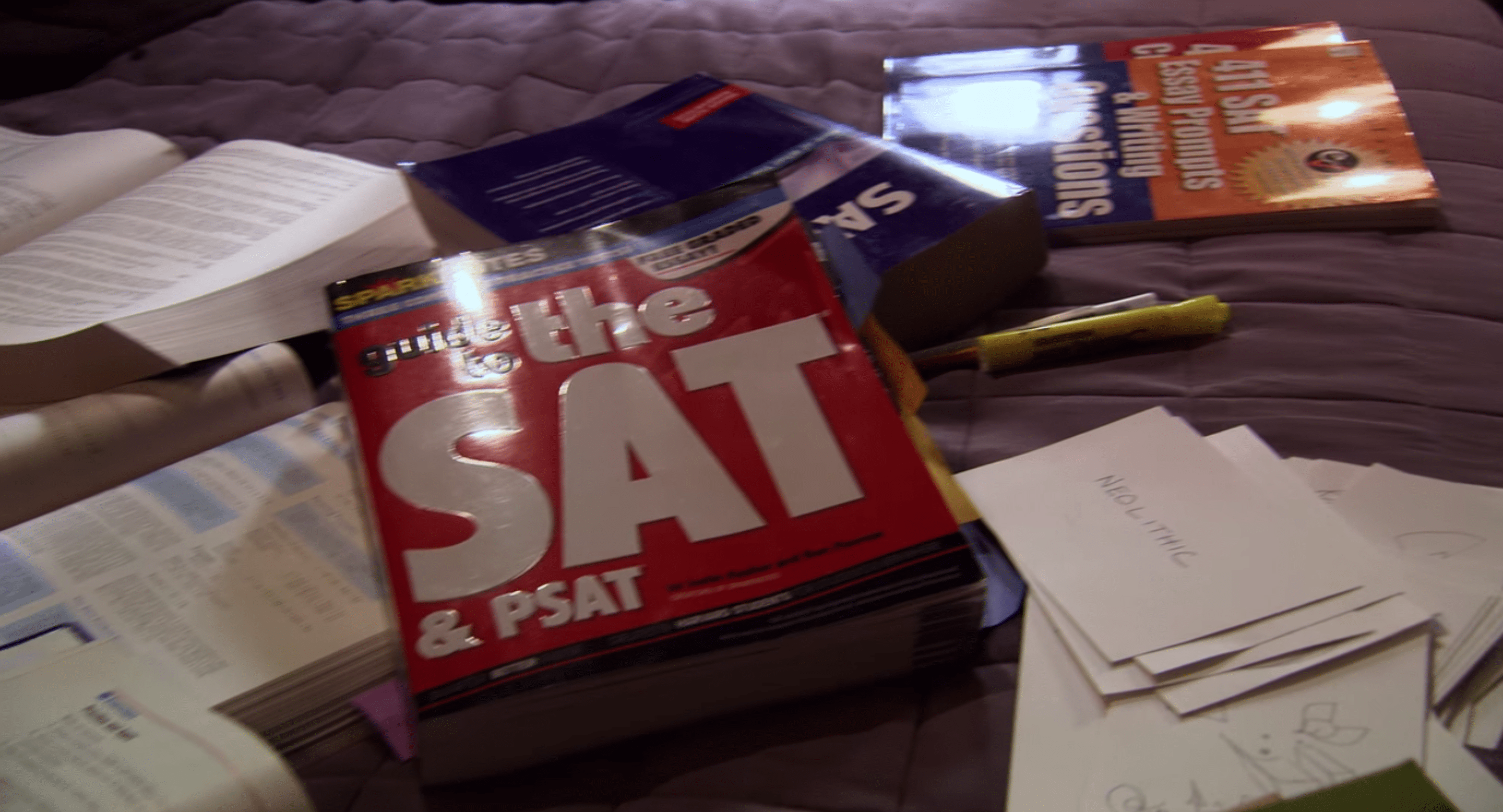Why China’s School System Is Superior to America’s

By Lisa Yin Zhang
Staff Writer
13/2/2020

In schools with names like Oxford International College and EtonHouse, students carouse by artificial lakes in blazers and plaid skirts; lounge on grass lawns beside brick arches laced with ivy. These schools aren’t, like you might think, in the UK. In fact, they’re not in the West at all — they’re in China.
Oxford International College has no relation to Oxford University, nor does EtonHouse have any affiliation with Eton College. Instead, these schools appeal to middle-or-upper-class Chinese through the image of Western elitism, and by touting Western education values. Of the top-ranked Chinese public school their child previously attended, Xu Jin complained: “The teachers just taught the right answers and didn’t want the students to ask why.” But regarding their current international school, they gushed, “She’s happier and learning faster.” She’s not alone: In 2001 there were 22 such international schools in China. By 2013, there were 338, with enrollment exploding twenty-five times over. Western-style education is increasingly popular amongst Chinese parents.
Yet, in 2012, China stunned the world by seizing first place in the Programme for International Student Assessment (PISA), which measures 15-year-olds’ reading, math, science, and problem-solving abilities across 36 countries. This prompted British education minister, Elizabeth Truss, to lead a “fact-finding mission” to Shanghai to learn the secrets of China’s education success. And on the same test, the US lagged far behind, coming in at 23rd or 24th in most subjects, and even into the 30s on others. 2018 saw similar results, with China once again topping the rankings.

There has been some back and forth about the significance of the PISA results. China initially submitted the scores from only one city, Shanghai, for consideration, despite testing in multiple regions, while other countries submitted scores from a broad range of schools and municipalities. Shanghai is, of course, a historically elite and well-educated city. Its per capita GDP is more than twice the national average, and the percentage of students there who go on to attend college is more than triple the national average. Still — the US’ best-performing state, Massachusetts, if ranked as its own country, would come in at only 17th place out of 36, barely better than average. And Andreas Schleicher, an official responsible for administering the PISA, said: “We have actually done PISA in 12 of the provinces in China. Even in some of the very poor areas you get performance close to the OECD average.” At the same time, it is precisely China’s heavy exam-oriented culture that puts it under scrutiny. These students learn solely through rote repetition, critics allege, memorizing facts but losing play, creativity, well-roundedness, and even a sense of humanity in the process. Could it really be a better education system?
It is precisely China’s heavy exam-oriented culture that puts it under scrutiny.
This question is crucial, because the country with the better education system will enjoy a tremendous advantage. In the post-World War II-era, the US led the world in education, training a highly competitive workforce that formed the backbone of its economic power. China is acutely aware of this; the stated goal of its 1999 Action Plan to Revitalize Education into the 21st Century was “national strength.” “You’ve got over a billion people in China who are suddenly plugged into the world economy,” said President Barack Obama, speaking in 2010. “As it stands right now, America is in danger of falling behind.” Hearkening back to the anxiety of the Cold War, he added: “50 years later, our generation’s Sputnik moment is back.”
China mandates nine, often grueling, years of compulsory education. Students wake at 5:30 to study, and attend classes for more than 10 hours a day: from 8:30 am to 12:30 pm, 1:30 pm to 5:30 pm, and again from 7:30 pm to 10:30 pm in the evening. Students are required to study six of the following subjects: morality, Chinese, math, physical education, history, political science, labor skills, and sciences (physics, chemistry, and biology), though local districts are left to implement the curriculum. While access to primary education, which usually starts from age six to seven and lasts six years, and secondary education, which usually lasts three years, is nearly universal, attendance drops off sharply after. For students who reach high school, education is typically oriented entirely around the infamous gaokao, a nine-hour test administered once a year, identical across all its provinces. It is the sole determinant of a student’s college admittance — and, often, their future.

A middle school classroom in China (Picture Credit: Rex Pe)
In contrast, the US is comparatively test-shy, with no mandatory national test-taking and massive inconsistency between state education systems in testing, funding, curricula, and quality. In part this is because a comparatively small portion ($200 billion) of its massive education budget ($1.2 trillion) comes from the federal government, with the rest put up by states themselves, granting states and even individual school districts broad authority over what is taught in schools, and how. Federal attempts to regulate or even measure state systems have been met with insurrection: to date, 16 states have withdrawn from or introduced legislation to repeal the Common Core, a federal initiative for schools to meet certain benchmarks through standardized testing. Even start times and the number of compulsory years vary drastically, with kindergarten beginning sometime between the ages of five and eight and school continuing until some time between ages 16 and 18, and the school day starting sometime from 7:00 am to 9:00 am and ending sometime around 3:30 pm.
Federal attempts to regulate or even measure state systems have been met with insurrection.
Education, of course, is more than standards and curricula. There’s how — and whether — they’re implemented. In China, while the Chinese Communist Party mandates strict national standards, for instance, school districts either do not or cannot adhere to them. While high schools are ostensibly free, many are too far to commute to daily, allowing local governments to charge hefty boarding fees. In competitive districts like Beijing, schools informally use extra-curricular Math Olympiad results as entrance exams even though the central government officially banned the practice. And while even rural school districts maintain rigorous education standards, the dropout rate in rural areas is 25% in middle schools, and attendance in high schools is just 40%. Students who follow their migrant worker parents to city centers are constrained by the arcane hukou, or housing registration system, and are barred from public schools, relegated instead to shadowy, non-state schools run out of derelict factories or volunteer teachers’ homes, often with no heating or lighting, and with insufficient and outdated supplies.
The US has its own problems, starting early in a student’s education and only getting worse afterward. A recent McKinsey report demonstrates that while American students score in the top quarter of countries in reading, math, and science in the fourth grade, they drop to the bottom half by age 15. Impoverished students lag around two grade levels behind their peers, and because of its wonky school finance system, schools in poorer districts are allotted far less money than schools in wealthier districts, meaning that students that are already at risk of low performance are further deprived the resources they need. But the problem with American education is not only an issue of funding, but also of inefficient dispersion of resources. The US is now one of the heaviest spenders on education as a function of its GDP after quadrupling its spending over 30 years — yet, as Eric Hanushek, Paul and Jean Hanna Senior Fellow at Stanford University’s Hoover Institution, shows, its student achievement levels in reading, math, and science skills tested in the twelfth grade have stayed nearly flat across this period. Because of its distaste for standardized testing, it’s hard to measure students’ performance, especially across states, and recalibrate accordingly, making the American system one that paradoxically prioritizes inputs — how much money is spent, the student-teacher ratio — over outputs, like PISA scores and college-readiness. Additionally, black and Latino students perform at lower levels than their white peers at all income brackets, and they’re projected to make up an increasingly large proportion of the populace with each passing year.

An American classroom
Which country has higher school standards, though? Since both countries have such a vast, varied, and complex education landscape, perhaps the best way to compare their standards is to look at the standardized national exams used to sort students into universities at the end of high school: the Chinese gaokao, and the American SAT. The gaokao, which is conducted over nine hours across two to three days, tests math, Chinese, and a foreign language, which can be Japanese, Russian, French, or Spanish, but is almost always English. Students also choose between two concentrations: a social science one, consisting of political science, history, and geography, or a natural science one, consisting of physics, chemistry, and biology. There are a mix of short answer and multiple-choice questions. The American SAT, revamped in recent years, now consists of math, reading, writing, and essay sections, with the reading and writing sections scored together and the essay portion optional. A small portion of the math section is fill-in rather than multiple-choice, but there are no short answer questions. The additional SAT II subject tests include two levels of math, physics, chemistry, and biology, US and world history, and languages. But they are taken individually, chosen at will, and not often required. Crucially, unlike the gaokao, the SAT is administered many times a year, allowing students the chance to take the test multiple times to achieve their desired scores — or even combine section scores across multiple tests — instead of having to wait a year.

In general, the SAT is easier than the gaokao. The math section of the SAT begins with a page of reference formulas and properties, like the number of degrees in a circle, the side ratios of special right-angled triangles, and the area of a sphere. The following question is quite representative of the difficulty of the test, pulled from somewhere around the middle of the math section (SAT sections become progressively harder). (All the sample SAT questions in this story are taken from the 2018 October SAT exam.)
A right circular cone has a volume of 24π cubic inches. If the height of the cone is 2 inches, what is the radius, in inches, of the cone?
A) 2√3
B) 6
C) 12
D) 36
Though this question purports to be a geometry one, it’s essentially an algebra question. If the volume of a cone is (1/3) π (r^2) (h), then we can plug in the given volume and the given height to yield: 24π = (1/3) π (r^2) (2), or 36 = (r^2), or B: r = 6.
On the other hand, here’s a question from the math section of the 2018 gaokao (my translation):
The following figure is one studied by the Greek mathematician Hippocrates. This figure consists of three semicircles, the diameters of which are the hypotenuse BC of the right triangle ABC and the right sides AB and AC. The area within triangle ABC (the shaded portion) is designated Area I, the black parts of the figure designated Area II, and the rest of the figure designated Area III.

If the probability that a random point within the figure is within Area I is designated as p1; the probability that it is within Area II is designated p2; and the probability that it is within Area III is p3, then:
A) p1 = p2
B) p1 = p3
C) p2 = p3
D) p1 = p2 + p3
I scored well within the 99th percentile of the SATs when I took them back in 2015 — and it took me well over an hour to answer this question. (Meaning, given the time constraints of the exam, I’d certainly flunk). To arrive at the solution, one has to conduct a full-blown proof, bringing in a number of properties of right-angled triangles and circles. While these properties are not particularly complex – that the area of a triangle is the base multiplied by the height, that the sum of the squares of two sides of a right triangle equals the square of the hypotenuse – it requires one to apply them in multi-step configurations. To even get p2, for instance, one has to find the area of a semicircle, subtract the area of the right triangle, and then subtract that result from the sum of the other two semicircles. And that’s only part of the problem. While the gaokao partly tests for memorization, as the formulas are not given, compared to the SAT question above — this question, and the gaokao in general, demands much more dexterity in manipulating knowledge in unexpected ways than does the SAT.
The gaokao in general demands much more dexterity in manipulating knowledge in unexpected ways than does the SAT.
The language or literature section of the gaokao is roughly analogous to the reading and writing sections of the SAT, and has some of the same types of questions: multiple-choice questions, fill-in-the-blank questions, grammatical questions, and reading comprehension questions. A representative question from the writing section of the 2018 October SAT, asks for the most appropriate phrase to replace the underlined portion:
At the end of a duration nine months long, The Cat in the Hat was complete.
A) NO CHANGE
B) After thirty-six weeks — or nine months — had passed,
C) After a length of nine months had elapsed,
D) Nine months later,
The difficult part about the question is that its answers are all substantively the same. The only reason D is the right choice is because the others are unnecessarily wordy. None of the information provided was false, and nothing within the sentences is technically ungrammatical.
Next, a language question from the 2018 gaokao (my translation):
Among the following sentences, the one without speech problems is
A) As of the end of December, our institute has launched more than 40 exhibitions with distinctive themes based on acoustic and electro-optical technology, and is the year with the most exhibitions in the 90 years since its establishment.
B) Calligraphy is China’s greatest traditional culture. In recent years, with the strong support of the education sector, calligraphy education in primary and secondary schools has flourished and students have attained great levels.
C) China’s traditional “24 solar terms” was included in the “List of Representative Works of Human Intangible Cultural Heritage,” once again attracting the attention of the world.
D) This company has a normal salary, its developmental prospects are very good. Many students have submitted resumes, but in the end, the company only accepted our school recommendation.
Rather than being presented a single sentence, and asked to choose the best option, the gaokao question demands that one evaluate each sentence to isolate the choice without grammatical errors. It’s also obvious that each of the four answer choices is a more complex sentence than the single sentence presented in the SAT. My father, a native Chinese speaker (who took the gaokao thrice, back when the admissions rate to any college was lower than Stanford’s 4.8%), admitted, “I even read the sentences a few times to find the tricks.” The correct answer, apparently, is C. I — American born Chinese, the alum of years of weekend Chinese classes — didn’t stand a chance. And on top of the comparative difficulty of this multiple choice question, there are more difficult types of question in the gaokao that have no American analogue, like short answer questions, which privileges no meta-exam deduction like the process of elimination to guess correctly.

Parents waiting for their children outside the elite Nantong Middle School, where the gaokao is being conducted
I’d fare better, of course, in the foreign-language section of the gaokao — but frankly, not as well as you’d think. An English question from an unstated year asks:
Fill in the blanks on this English grammar question: Good families are much to all their members, but ___ to none.
A) Something
B) Anything
C) Everything
D) Nothing
Once one gets to the crux of the question, the answer becomes apparent: good families mean something to each of their members, but not everything. But it is an unusual application of the word “much” — I would personally have gone with “mean a lot,” or even “mean much.” Even as a native speaker, it took me a couple of reads to understand the question. And this question in particular echoes popular sentiment that the gaokao is not just intended to test recall, but to actively trip up test-takers with tricky questions.
There is no foreign language analogue on the SAT. To adequately compare the two systems, we have to turn to the SAT II. This is a somewhat flawed comparison, as the SAT II is optional at almost all schools, including the most elite colleges (indeed, the SAT itself is beginning to become optional). As such, usually only those students shooting for high-tier schools take the SAT II at all, while all Chinese students looking for admittance to higher education must take the entirety of the gaokao. That said, a sample question from the Chinese Language SAT II, pulled from the College Board website itself, is below:
In this part of the test, you will hear short questions, statements, or commands in Mandarin Chinese, followed by three responses in Mandarin Chinese, designated A), B), and C). You will hear the questions or statements, as well as the responses, just one time, and they are not printed in your test booklet. Therefore, you must listen very carefully. Select the best response and fill in the corresponding circle on your answer sheet.
(Woman) 你的中国话说得真不错。(Your Chinese is pretty good.)
(Man) A) 明天见 (See you tomorrow)
B) 对不起 (I am sorry)
C) 哪里,哪里 (Oh, please, you flatter me)
The SAT II question is aural only (the script above was provided only for reference) and only read once, while the gaokao is written, allowing a test-taker to revisit the question as many times as they’d like. In that respect, the American test seems more difficult. On the other hand, note that the answer choices in the SAT II are not in any way similar to each other, unlike the gaokao choices, meaning it’d be difficult to get confused between them. They’re also clearly culled from a stock of phrases that introductory Mandarin students are asked to memorize in answer to a specific prompt, unlike the gaokao choices, which are entirely context-dependent within a particular sentence structure. I’d argue that the gaokao questions require a more sophisticated understanding of the language.
In the SAT, one can go a long way solely through deduction, by reading through answer choices carefully and comparing or eliminating them. And rather than having to memorize formulas, the SAT provides most of them. One could therefore argue that the SAT tests logical reasoning — but it’s also just an easier test. Few questions, like the question regarding the radius of the cone, are multi-step problems, meaning that where it tests the application of a principle, it does not test the ability to piece that knowledge into a larger whole, or to solve a problem by disassembling it into smaller problems, like the probability question in the gaokao. Where the SAT seems to require some sophisticated — even intuitive — knowledge, it allows one to compare answer choices and eliminate, unlike short answer questions on the gaokao. The Chinese section, which is only present on the more rigorous SAT II, is the only one that could be deemed sophisticated — and even then, it’s arguable. In both structure and content, the gaokao takes the edge as the more difficult test, and this suggests that the Chinese education system holds its students to a more difficult standard. With their closely-structured curriculum, well-oiled system of implementation, and legendarily difficult comprehensive exam, Chinese schools, at least at the pre-university level, seem to do a better job than American ones in preparing their graduates for the 21st century.
